Why you can trust Tom's Hardware
Firmware
Gigabyte updated its BIOS on some X670 refresh boards, and that carried that layout over to the X870 line and the Aorus Master. The updated Easy Mode is laid out logically and displays plenty of information about the system, processor, RAM, fan speeds, and has several selectable options, including XMP profiles and RAM tweaks, Re-Size BAR support, Smart Fan 6 access, and more. The black background and white text familiar to the Aorus line is easy to read, while the orange accents on the AOrus line provide a much-needed visual update.
The Advanced mode also received a facelift. While all headings are still across the top, they are now larger ‘buttons’ and easily selectable with a mouse. The highlight bar (where you are on the page) is Aorus Orange and easy to see. Every option you need and want is at your fingertips, and you don’t have to drill down several layers to reach the most commonly used functions – especially if you populate your selections in the Favorites section.

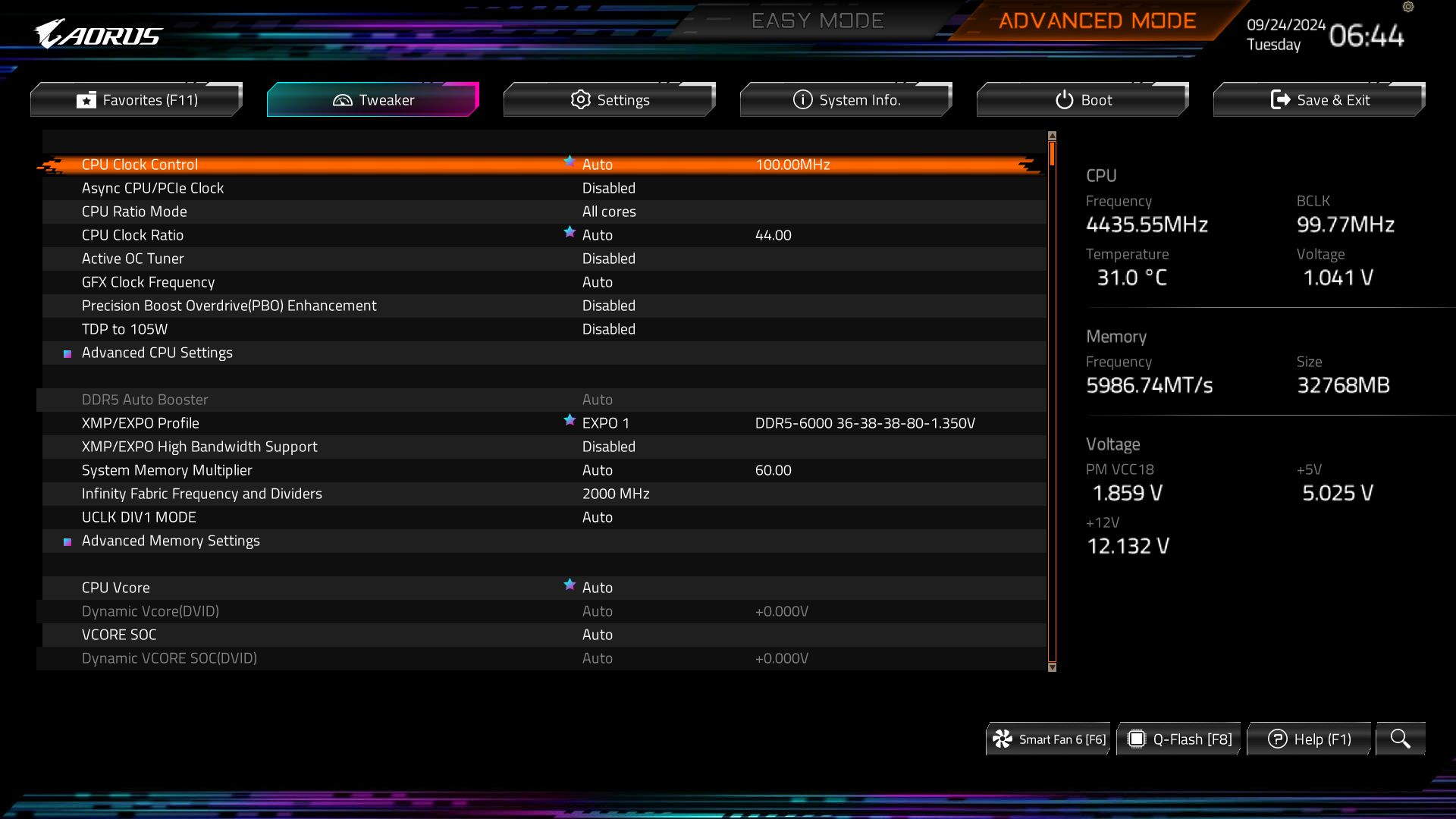


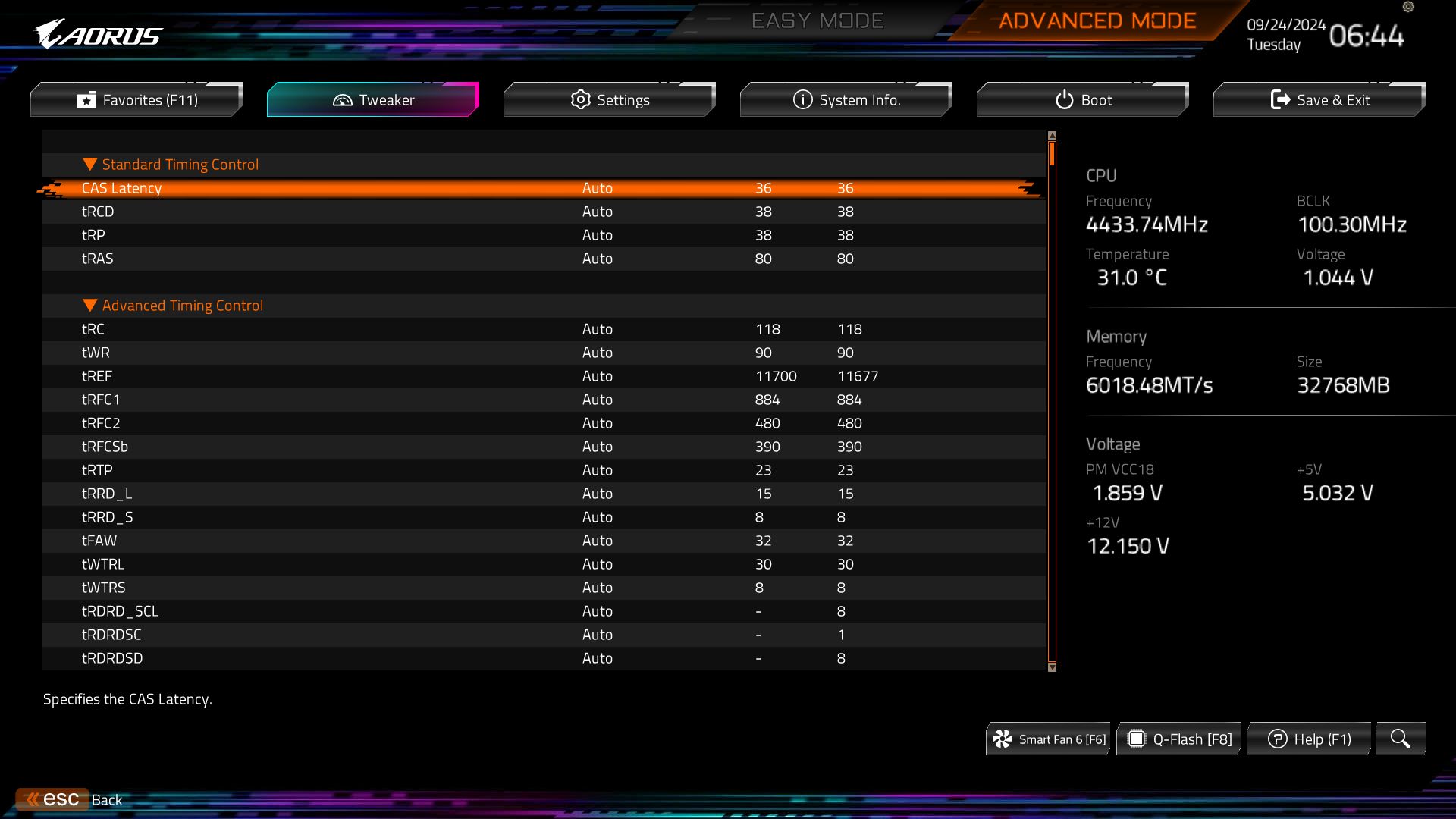


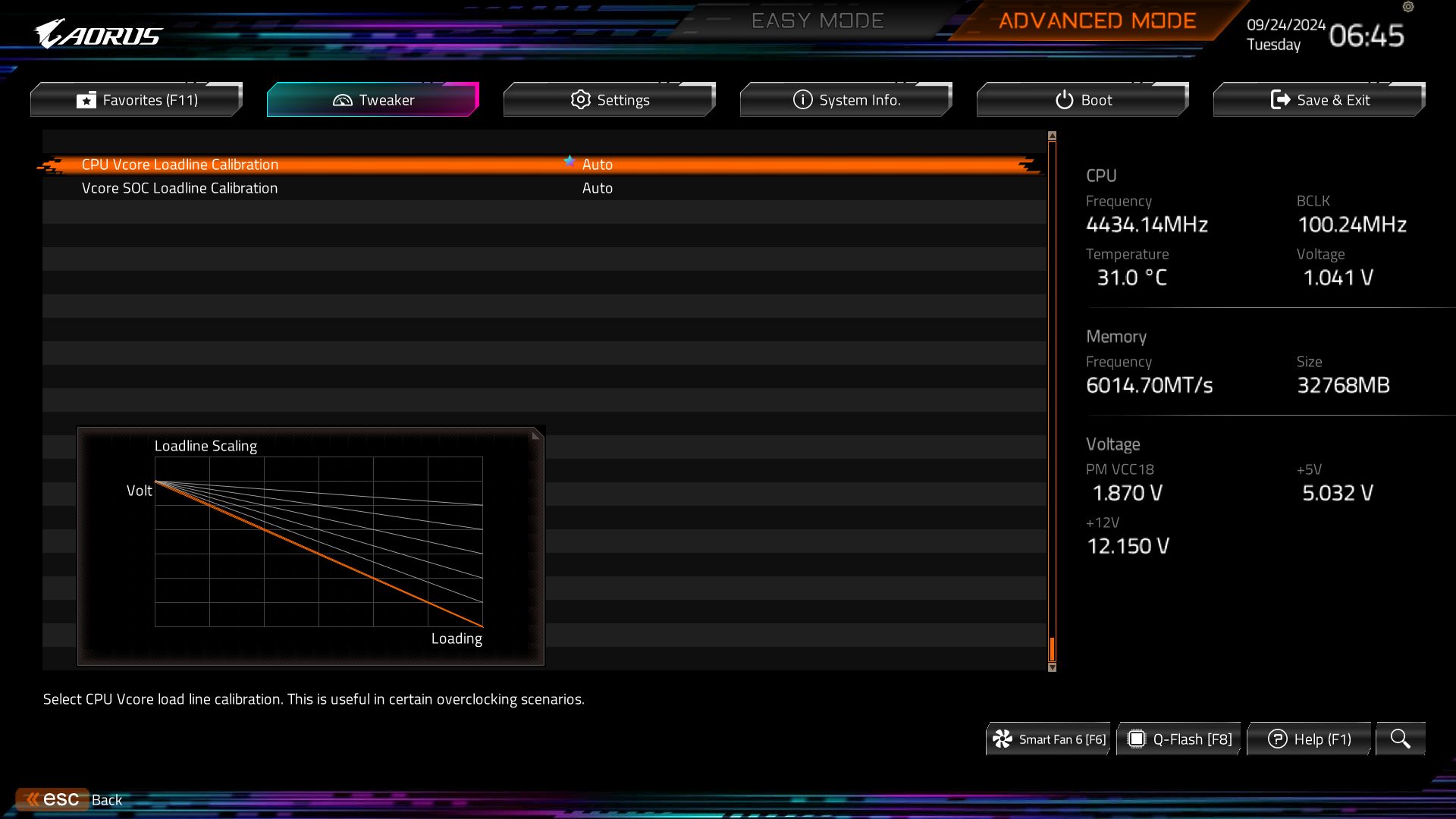
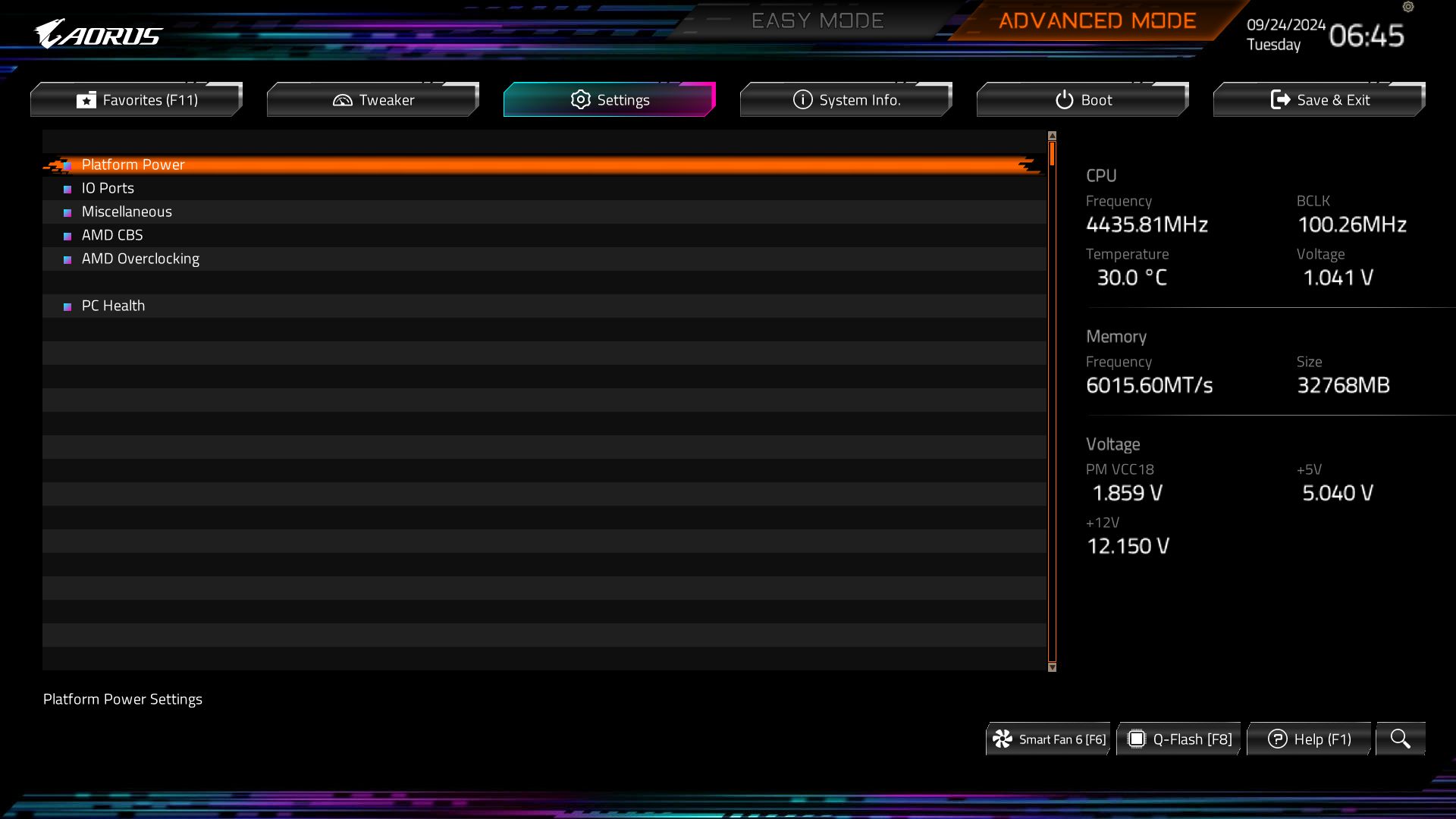

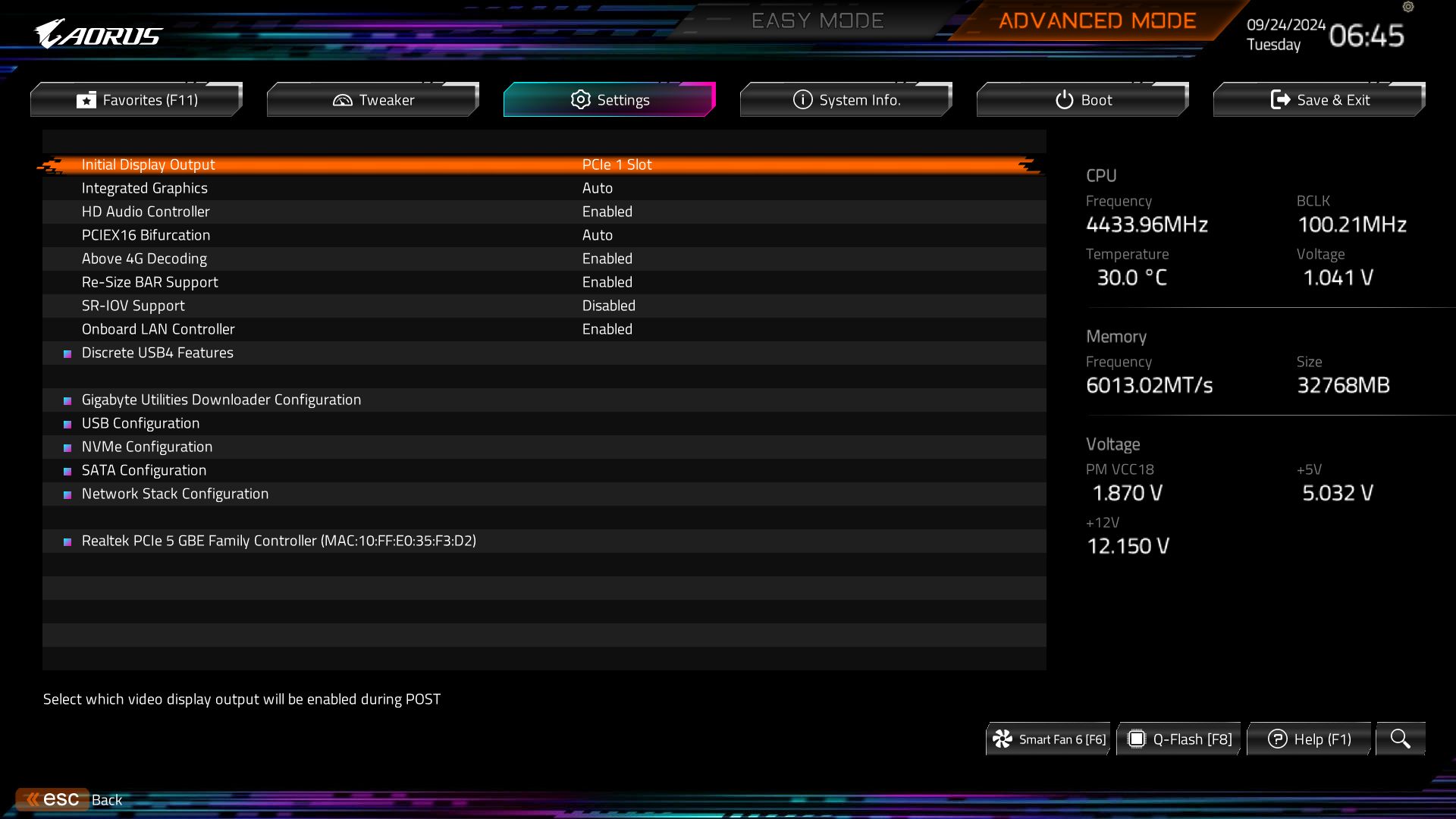









Software
Several months back, Gigabyte released a new software suite called the Gigabyte Control Control (GCC). GCC is a one-stop shop that controls several functions, from RGB and Fan control to hardware monitoring and overclocking. It’s also helpful in finding, downloading, and installing driver updates to your system. It’s a simple application that does its job. It’s also a much cleaner tool than the previous App Center and gets our approval for the breadth of functionality it brings users.
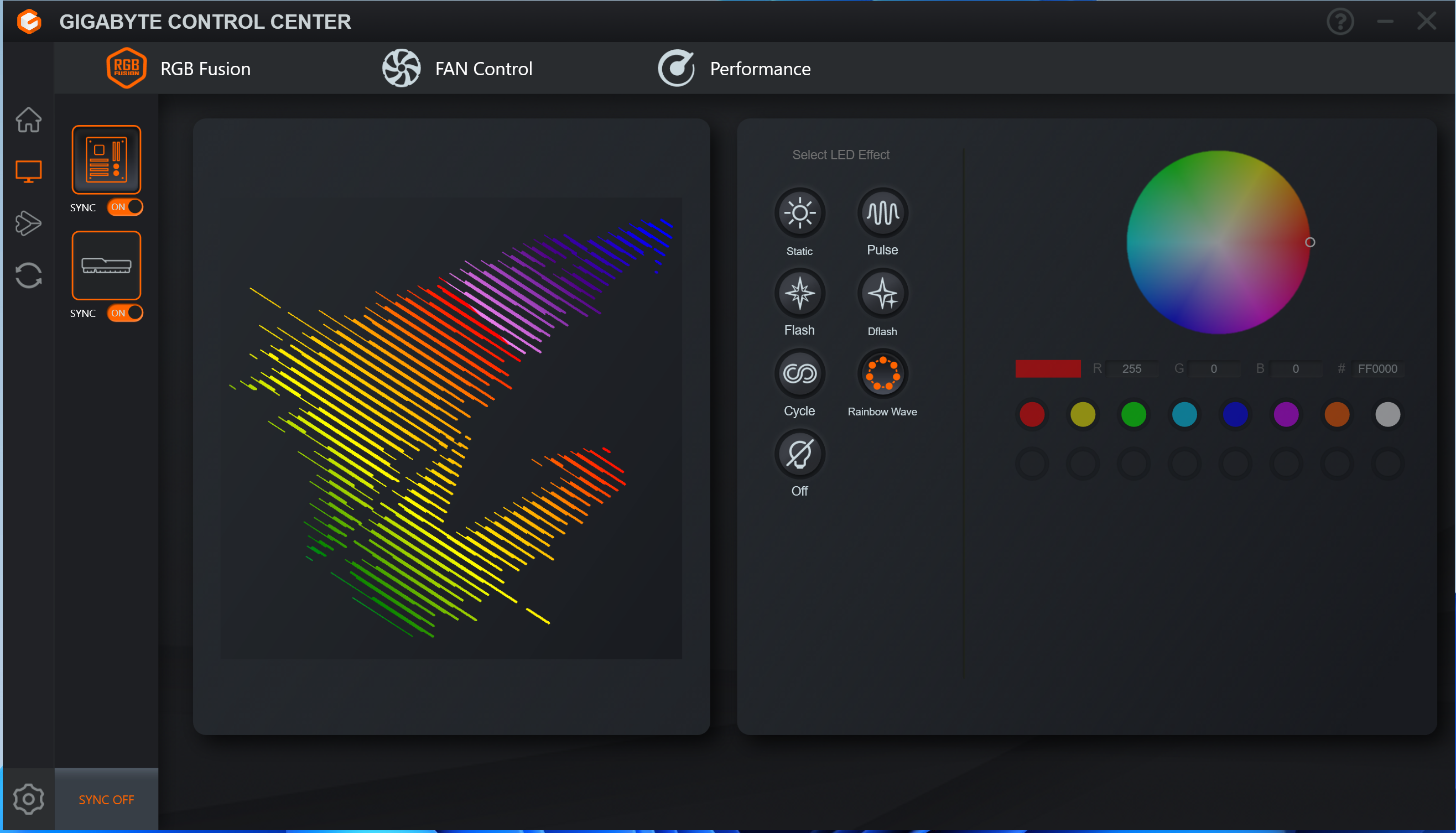
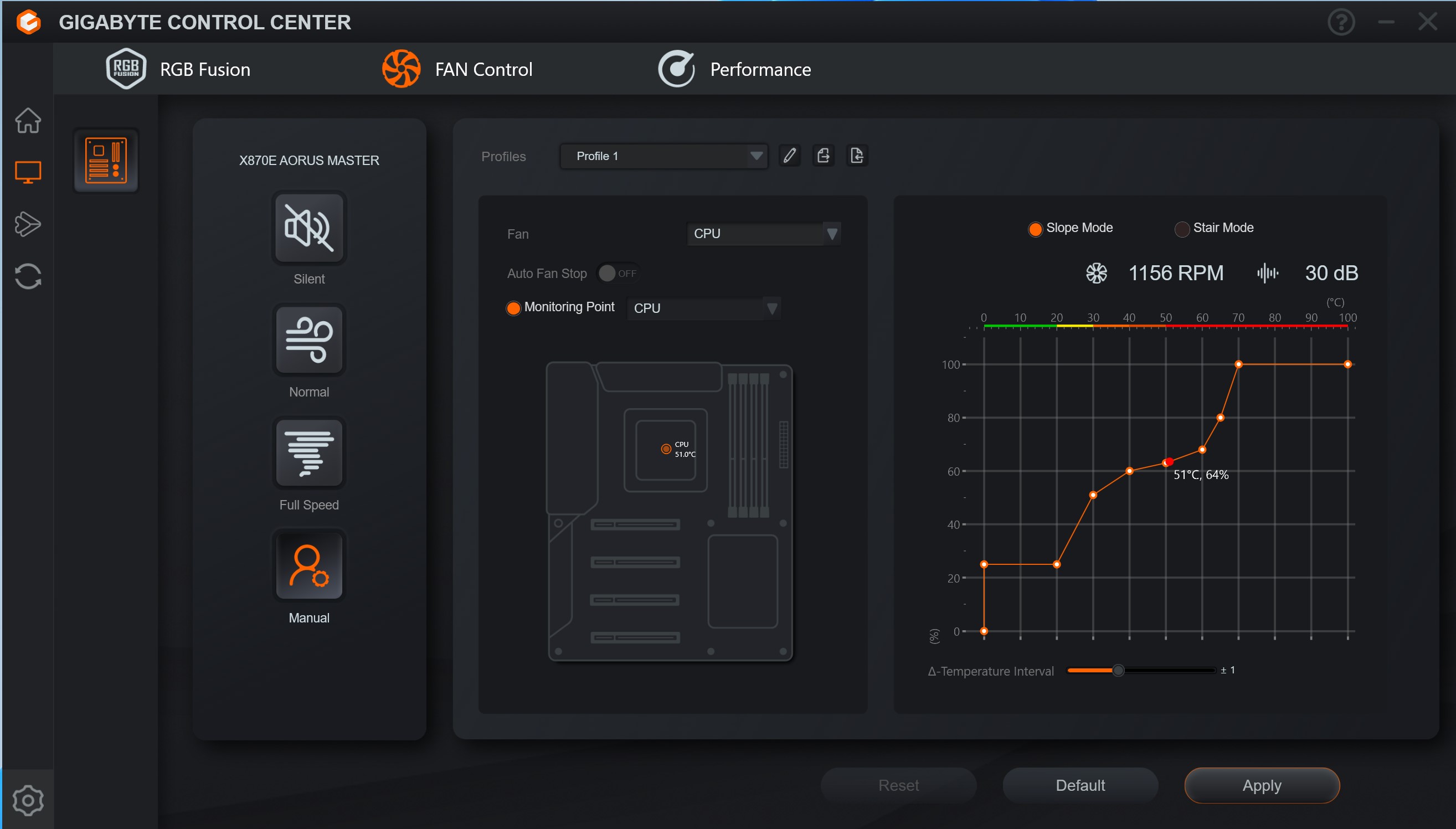


Test System / Comparison Products
We’ve updated our test system to Windows 11 (23H2) 64-bit OS with all updates applied as of late September 2024 (this includes the Branch Prediction Optimizations for AMD). Hardware-wise, we’ve updated the RAM kits (matching our Intel test system), cooling, storage, and video card. Unless otherwise noted, we use the latest non-beta motherboard BIOS available to the public. Thanks goes out to Asus for providing the RTX 4080 TUF graphics card and Crucial for the 2TB T705 SSDs in our updated testbed. The hardware we used is as follows:
Test System Components
| CPU | AMD Ryzen 9 9900X | Row 0 - Cell 2 |
| Cooling | Arctic Liquid Freezer II 420 | Row 1 - Cell 2 |
| Storage | Crucial 2TB T705 M.2 PCIe 5.0 NVMe SSD | Row 2 - Cell 2 |
| RAM | Kingston Fury Beast DDR5-6000 CL36 | (KF560C36BBEAK2-32) |
| RAM | Teamgroup T-Froce Delta DDR5-7200 CL34 | (FF3D518G7200HC34ABK) |
| RAM | Klevv Cras XR5 RGB DDR5-8000 | (KD5AGUA80-80R380S) |
| GPU | Asus TUF RTX 4080 16G | Row 6 - Cell 2 |
| PSU | EVGA Supernova 850W P6 | Row 7 - Cell 2 |
| OS | Windows 11 64-bit (23H2 - 22631.4169) | Row 8 - Cell 2 |
| Sound | Integrated HD audio | Row 9 - Cell 2 |
| Network | Integrated Networking (GbE to 10 GbE) | Row 10 - Cell 2 |
| Graphics Driver | NVIDIA Driver 561.09 | Row 11 - Cell 2 |
Benchmark Settings
| Synthetic Benchmarks and Settings | Row 0 - Cell 1 |
| Procyon | Version 2.6.848 64 |
| Row 2 - Cell 0 | Office Suite (Office 365), Video Editing (Premiere Pro 23.6), Photo Editing (Photoshop 25.0, Lightroom Classic 12.5) |
| 3DMark | Version 2.27.8177 64 |
| Row 4 - Cell 0 | Firestrike Extreme (v1.1) and Time Spy (v1.2) Default Presets |
| Cinebench R24 | Version ‘build unknown’ |
| Row 6 - Cell 0 | Open GL Benchmark - Single and Multi-threaded |
| Blender | Version 3.6.0 |
| Row 8 - Cell 0 | Full benchmark (all 3 tests) |
| Application Tests and Settings | Row 9 - Cell 1 |
| LAME MP3 | Version SSE2_2019 |
| Row 11 - Cell 0 | Mixed 271MB WAV to mp3: Command: -b 160 --nores (160Kb/s) |
| HandBrake CLI | Version: 1.2.2 |
| Row 13 - Cell 0 | Sintel Open Movie Project: 4.19GB 4K mkv to x264 (light AVX) and x265 (heavy AVX) |
| Corona 1.4 | Version 1.4 |
| Row 15 - Cell 0 | Custom benchmark |
| 7-Zip | Version 21.03-beta |
| Row 17 - Cell 0 | Integrated benchmark (Command Line) |
| Game Tests and Settings | Row 18 - Cell 1 |
| Far Cry 6 | Ultra Preset - 1920 x 1080, HD Textures ON |
| F1 2022 | Ultra Preset - 1920 x 1080, Ultra High (default) Bahrain (Clear/Dry), FPS Counter ON |
MORE: Best Motherboards
MORE: How To Choose A Motherboard
MORE: All Motherboard Content
Get Tom's Hardware's best news and in-depth reviews, straight to your inbox.
Current page: Firmware, Software and Test System
Prev Page Features and Specifications Next Page Benchmarks and Final Analysis
Joe Shields is a staff writer at Tom’s Hardware. He reviews motherboards and PC components.
-
UnforcedERROR I'm not sure I'd consider a $499 pricetag "pleasing" but I'll concede that they at least maintained the same price a generation later.Reply -
thestryker It's an interesting choice to go with 3/4 M.2 off of CPU lanes. Perhaps it's due to the likelihood that the next generation of video cards will be PCIe 5.0 so running the primary slot at x8 won't matter for any card. I think I'd prefer having a second PCIe 5.0 slot than the PCIe 5.0 M.2 just the same though.Reply -
PlutoDelic Reply
Honestly, 40 usable lanes and quad-channel support in my opinion should be the new norm.thestryker said:It's an interesting choice to go with 3/4 M.2 off of CPU lanes. Perhaps it's due to the likelihood that the next generation of video cards will be PCIe 5.0 so running the primary slot at x8 won't matter for any card. I think I'd prefer having a second PCIe 5.0 slot than the PCIe 5.0 M.2 just the same though. -
thestryker Reply
I think the extra bandwidth from DDR5 has shoved quad channel further away at least from the manufacturers side of things. Better memory controllers and higher performance memory will likely keep the CPUs fed so I doubt this is going to change. The primary beneficiary for client workloads would be integrated graphics and the market for premium there is untested.PlutoDelic said:Honestly, 40 usable lanes and quad-channel support in my opinion should be the new norm.
As for PCIe while 40 lanes would be great moving DMI to PCIe 5.0 would go a long way. Doubling the chipset bandwidth would allow all the connectivity to go through the chipset which should leave around 28 lanes on current desktop CPUs. I think this would be sufficient for the majority of people with desktop workloads. -
DawesLimit I'm not sure what's intention for testing the 14900k and 7950X against the 9900X. They are faster, we know that. A better test would have been the 9900X on the older X670E vs the newer X870E MBs.Reply -
DrDocumentum Confusing test mixing 7950x vs 9900x. More important data here would be a DDR5 6000 Mhz vs 8000 Mhz test to see if the improvements AMD claimed on DRAM speed support translates into tangible performance.Reply -
thestryker Reply
They stated in the review that their 8000 kit didn't work on this or the other X870E board they reviewed.DrDocumentum said:More important data here would be a DDR5 6000 Mhz vs 8000 Mhz test to see if the improvements AMD claimed on DRAM speed support translates into tangible performance. -
shinywaffles did you test the ai snatch application that should help with optimizing the ddr5 memory? I have not been able to find it anywhere yetReply -
Hotrod2go I'm waiting to see reviews comparing performance both stock & OC between X670E boards & this X870E generation boards before I draw any conclusions on this 'updated' chipset.Reply
Some sources I've seen have suggested better RAM traces on these X870E boards but I'm still to see real world evidence of this. -
DawesLimit Reply
Yeah seems like a missed opportunity to test that scenarios. Then again, maybe AMD prohibit them from doing such comparission?! :unsure:Hotrod2go said:I'm waiting to see reviews comparing performance both stock & OC between X670E boards & this X870E generation boards before I draw any conclusions on this 'updated' chipset.
Some sources I've seen have suggested better RAM traces on these X870E boards but I'm still to see real world evidence of this.

